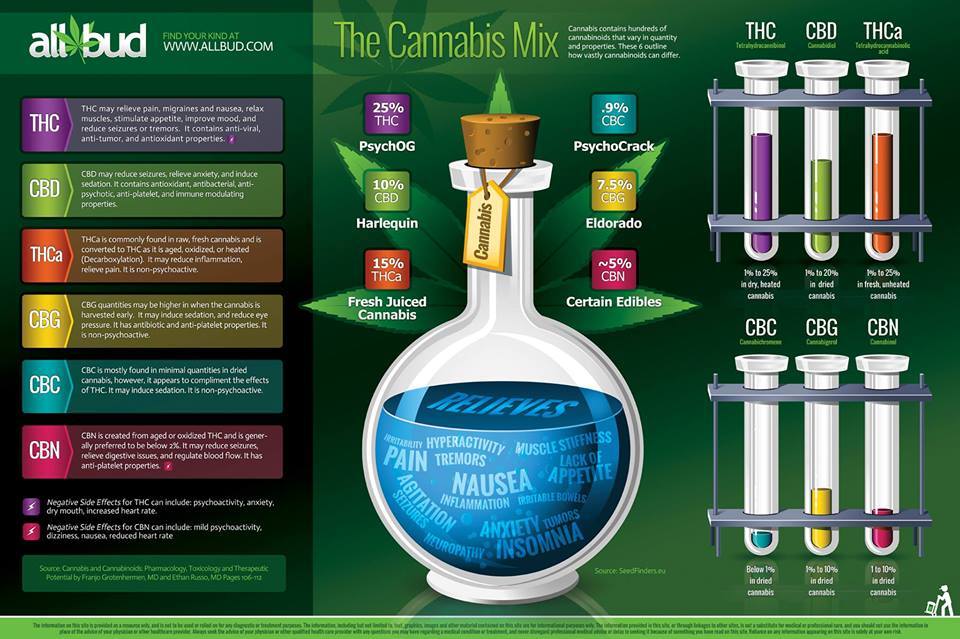Not All Cannabinoids Created Equal

 Cannabis is a complicated mix—something you probably know full well. Cannabis is made up of individual cannabinoids, and different strains will contain diverse components in varying amounts. Just how much variety is there in different cannabis strains? Currently, there are more than 100 known cannabinoids—meaning there are potentially innumerable combinations that can be utilized in different strains.
Cannabis is a complicated mix—something you probably know full well. Cannabis is made up of individual cannabinoids, and different strains will contain diverse components in varying amounts. Just how much variety is there in different cannabis strains? Currently, there are more than 100 known cannabinoids—meaning there are potentially innumerable combinations that can be utilized in different strains.
That may sound a little overwhelming, especially if you assume that being a good MMJ patient requires you to be informed about all these different cannabinoids. While having some general knowledge is certainly wise, it would be silly to suggest that you need to be an expert on each different cannabinoid—especially since, frankly, a lot of them don’t really have much effect one way or the other.
The Cannabis Breakdown
It might surprise you to learn that cannabis actually contains somewhere around 460 unique compounds. To date, 80 of them have been positively identified as cannabinoids, though it is likely that there are at least 100 cannabinoids in total, many of them simply pending further research. Some of them are not known to have any real medical effect, but the FDA currently considers about 20 of them to be medically relevant.
For the MMJ patient, it is helpful to understand the different ways in which cannabinoids react—with each other, with the outside environment, and of course with the human body. Consider some of these facts:
- Many cannabinoids are actually created—or destroyed—by way of chemical reaction. These chemical reactions can, of course, have a big impact on the medicinal qualities of the cannabis.
- One example is the cannabinoid known as THCa, which converts to THC as it is aged, oxidized, or heated—including when it is lit up to be smoked. What this means, in essence, is that buying a strain heavy on THCa with the intent of smoking it is counterproductive, as you really just end up with a higher volume of THC.
- Another case worth noting: CBG tends to be much more highly concentrated when the cannabis is harvested earlier. In other words, the properties of the cannabis are determined in large part at the growing facility, long before it reaches the dispensary or the patient.
- Still another example: CBN is created when THC is oxidized and aged. In most cases, you’ll want to see low CBN values, as this is a cannabinoid known to cause dizziness or nausea in many patients. We can't help but wonder if high CBN values are the cause of the cases of sickness from edibles.
- Again, many of these cannabinoids simply don’t make much of an impact one way or the other. CBC is present in an extremely low amount in most dried cannabis—below one percent—and so it is unlikely that it has any medicinal effect, beyond the fact that it complements THC well.
What’s in Your Cannabis?
The bottom line: Cannabis is made up of many different cannabinoids, but not all of those cannabinoids are created equal. They differ not only in their chemical properties and medicinal effects, but even in their basic level of importance. While a lot of cannabinoids seem to have great medical properties, many others are so scarce, so low in quantity that they just don’t do much. Likewise, many potentially effective cannabinoids are actually destroyed in the consumption process, rendering them pretty much moot.
The interesting thing, though, is that as research continues and we all come to understand cannabinoids better, some of these seemingly ineffective cannabinoids may be boosted and enhanced. Super producers will no doubt find ways to up their quantities or to prevent them from being destroyed—which could lead to some exciting new breakthroughs in medical marijuana use.
For now, though, we recommend that MMJ patients show special attention to the primary cannabinoids: THC, CBD, and—for those willing to consume it raw and fresh—THCa. These are the ones we know to be impactful, and certainly worth being aware of!

